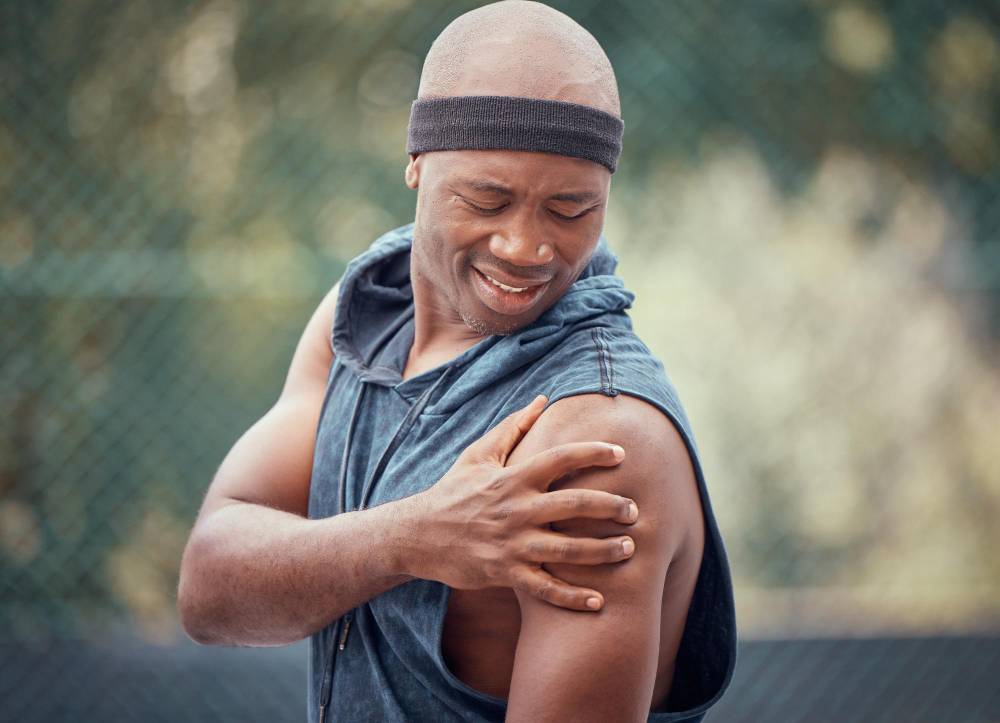If you’re an athlete or work out regularly, you may be familiar with the term “tendonitis.” Tendonitis is inflammation of a tendon, which is the tissue that attaches muscle to bone. Biceps tendonitis specifically refers to inflammation of the bicep tendon typically at the shoulder where the tendon runs through a tunnel called the bicipital groove.
What Is Bicep Tendonitis?
Bicep tendonitis is a common injury, especially among weightlifters and other athletes. It is particularly common in overhead athletes such as softball or volleyball players. The condition is often caused by overuse or repetitive motions and can lead to pain and discomfort in the affected arm.
Symptoms of Bicep Tendonitis
Do you have pain in your upper arm or front of your shoulder that gets worse when you move your elbow? You may have bicep tendonitis.
The most common symptom of bicep tendonitis is pain in the upper arm near the front of the shoulder. This pain may be dull or sharp and can range from mild to severe. Other symptoms include:
• Swelling
• Tenderness
• Weakness in the affected arm
• Cracking or popping sounds when moving the arm
Causes of Biceps Tendonitis
There are a few different factors that can contribute to the development of bicep tendonitis. Some of the most common causes include:
Overuse
Repeated activities, such as weightlifting or throwing a ball, can lead to irritation in the tendon which worsens over time and results in tendonitis. Over longer periods of time, the tendon can develop small tears and even thicken in response to the trauma. Another potential cause is a sudden, intense strain on the tendon, such as trying to lift a heavy object without proper warm-up or technique.
Fortunately, biceps tendonitis can usually be treated with rest, icing, physical therapy, anti-inflammatory medication, and a cortisone injection. However, it is important to address the underlying cause to prevent re-injury. So listen to your body, make sure to avoid overuse and most of all consult with an Orthopedic Surgeon.
Age
As we get older, our tendons naturally lose some elasticity and become more prone to tears or inflammation.
If you fall into the older age group, it’s important to pay extra attention to your biceps during exercise or physical activity and prioritize proper warmup techniques. Taking these steps can help prevent age-related Biceps Tendonitis and keep you active for years to come.
Rotator Cuff Tears
Degenerative or traumatic conditions that are located close to the biceps tendon can also begin to take their toll on the biceps itself. The most important condition is rotator cuff tearing. The biceps runs between two important rotator cuff tendons, the supraspinatus, and the subscapularis tendons. As these tendons degenerate or tear the biceps can either tear itself or dislocate from its typical location in the bicipital groove. This can lead to further straining, degeneration, and tearing of the biceps tendon.
It’s important for those with rotator cuff tears to work with an Orthopedic Surgeon to ensure proper diagnosis and treatment. Working alongside a physical therapist can help improve strength and flexibility in all the muscles around the affected joint in order to prevent injury and can even improve symptoms.
If you think you might have a rotator cuff tear with associated biceps tendonitis, it’s essential to see an orthopedic surgeon as soon as possible. An orthopedic surgeon will take a medical history, conduct a physical examination, and order X-rays and an MRI if necessary.
Once a diagnosis has been made, the orthopedic surgeon will develop a treatment plan that may include rest, icing, physical therapy, anti-inflammatories, and corticosteroid injection. In severe cases, surgery may be necessary to repair torn tendons.
Conclusion
Bicep tendonitis is a common injury, especially in athletes and weightlifters. It can also occur due to overuse or repetitive motions of the arm. Treatment typically includes rest, ice, physical therapy, and potential surgery.
There are several things you can do to prevent bicep tendonitis, such as warming up before activity, stretching, wearing proper attire, and avoiding overuse. If you think you may have bicep tendonitis, be sure to see an Orthopedic Surgeon for a biceps tendonitis diagnosis and treatment plan.

